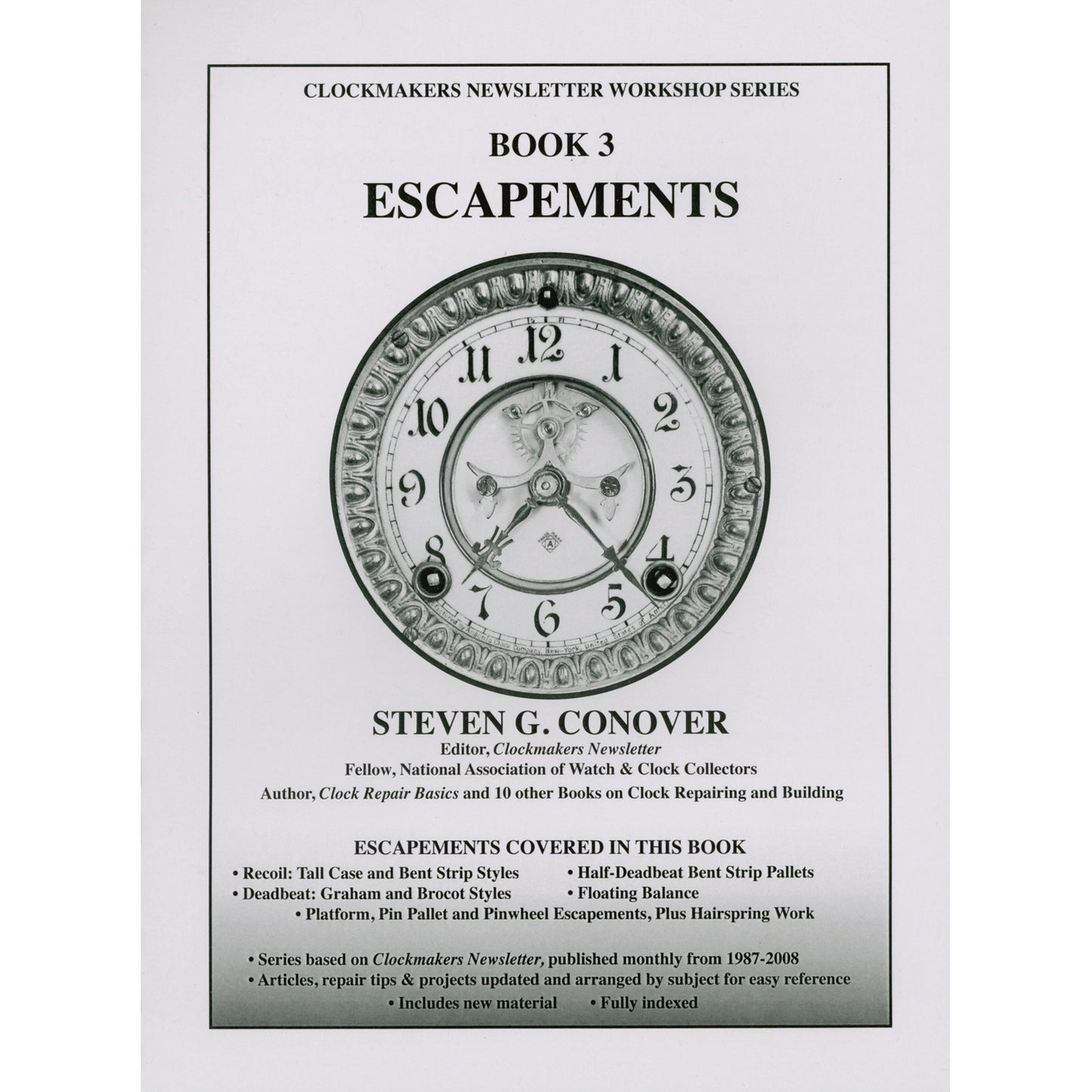NAWCC, Inc.
Book 3 Escapements: Clockmakers Newsletter Workshop Series
Book 3 Escapements: Clockmakers Newsletter Workshop Series
Couldn't load pickup availability
Book 3 Escapements: Clockmakers Newsletter Workshop Series
by Steven G. Conover, FNAWCC
Book 3 Escapements offers help in the subject area clock repairers constantly request. Listen to the ticking of a clock, and you are hearing the escapement at work. As the heart of the timing mechanism, the escapement includes a special wheel, a pallet unit, and either a pendulum or hairspring balance. A defect in the escapement stops a clock or makes it a poor timekeeper. All too often, repairers who are unsure of the proper adjustment or restoration required, guess at a procedure and make things worse. There are several types of escapements in clocks, and each requires its own repair procedures. The author has found that many novice repairers are unable to tell one type of escapement from another. Chapter 1, “Recoil Escapements”, begins with the ancient device that is still the most common style found today. Chapter 2, “Deadbeat Escapements”, covers the type which is generally found in better timekeepers. Invented in the eighteenth century, it is more difficult to make than the recoil escapement, and it is harder to adjust and repair as well. Chapter 3, “Other Escapements”, includes features on the balance escapements and hairsprings often used in small clocks. An extensive article by contributing editor Joseph Cerullo is the most complete treatment you’ll find of the floating balance escapement, a German invention used in a major portion of the small clocks made from the 1960’s through the 1980’s. Chapter 4, “Pendulums & Timekeeping”, gives tips on regulating clocks. It also looks at clocks which have been fitted with incorrect pendulums and helps the reader to determine the correct length for a replacement pendulum to be ordered or made.
Print lengh: 159 pages
NAWCC Members: Use code 'MEMBER10' at checkout for 10% off your order
Share

